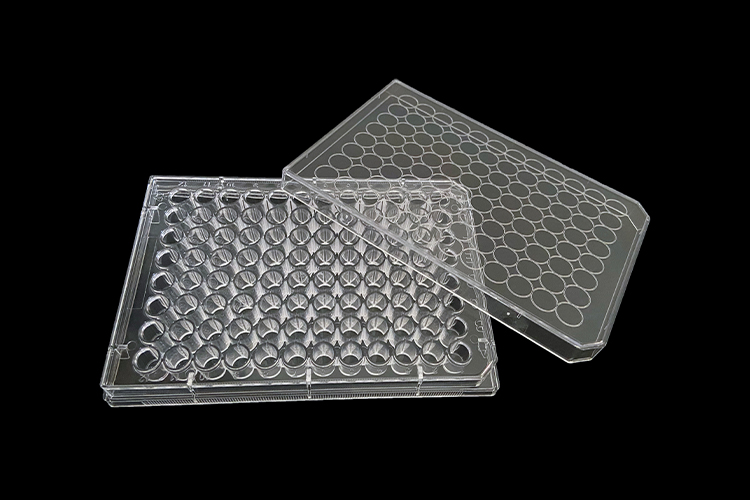The cell culture plates can be divided into flat bottom and round bottom (U-shaped and V-shaped) according to the shape of the bottom; The number of culture holes was 6, 12, 24, 48, 96, 384, 1536, etc; According to different materials, there are Terasaki plate and ordinary cell culture plate. The specific selection depends on the type of cultured cells, the required culture volume and different experimental purposes.
(1) The difference and selection of flat and round bottom (U-shaped and V-shaped) culture plates
Different shapes of culture plates have different uses. The culture cells are usually flat bottomed, which is convenient for microscopic observation, with clear bottom area and relatively consistent cell culture liquid level. Therefore, when doing MTT and other experiments, the flat bottom plate is generally used, regardless of whether the cells are attached to the wall or suspended. The flat bottom culture plate must be used to measure the absorbance value. Pay special attention to the material, and mark “Tissue Culture (TC) Treated” for cell culture.
U-shaped or V-shaped plates are generally used in some special requirements. For example, in immunology, when two different lymphocytes are mixed for culture, they need to contact and stimulate each other. At this time, U-shaped plates are generally used because cells will gather in a small range due to the effect of gravity. The round bottom culture plate can also be used for the experiment of isotope incorporation, which requires the cell collection instrument to collect the cell culture, such as “mixed lymphocyte culture”. V-shaped plates are often used for cell killing and immunological blood agglutination tests. The experiment of cell killing can also be replaced by U-shaped plate (after adding cells, centrifuge at low speed).
(2) Differences between Terasaki plate and ordinary cell culture plate
Terasaki plate is mainly used for crystallographic research. The product design is convenient for crystal observation and structural analysis. There are two methods: sitting and hanging drop. The two methods apply different product configurations. Crystal class polymer is selected as the material, and special materials are favorable for observing the crystal structure.
The cell culture plate is mainly made of PS material, and the material is treated surface, which is convenient for cell adherent growth and extension. Of course, there are also growth materials of planktonic cells, as well as low binding surface.
(3) Differences between cell culture plate and Elisa plate
The Elisa plate is generally more expensive than the cell culture plate. The cell plate is mainly used for cell culture and can also be used to measure the protein concentration; The Elisa plate includes coating plate and reaction plate, and generally does not need to be used for cell culture. It is mainly used for protein detection after immune enzyme-linked reaction, requiring higher requirements and specific enzyme label working solution.
(4) Hole bottom area and recommended liquid dosage of commonly used different culture plates
The liquid level of the culture liquid added to different orifice plates should not be too deep, generally within the range of 2~3mm. The appropriate liquid amount of each culture hole can be calculated by combining the bottom area of different holes. If too much liquid is added, the gas (oxygen) exchange will be affected, and it is easy to overflow during the moving process, causing pollution. The specific cell density depends on the purpose of the experiment.
Post time: Nov-04-2022


